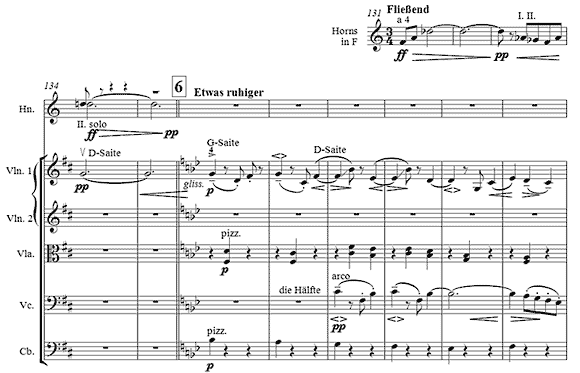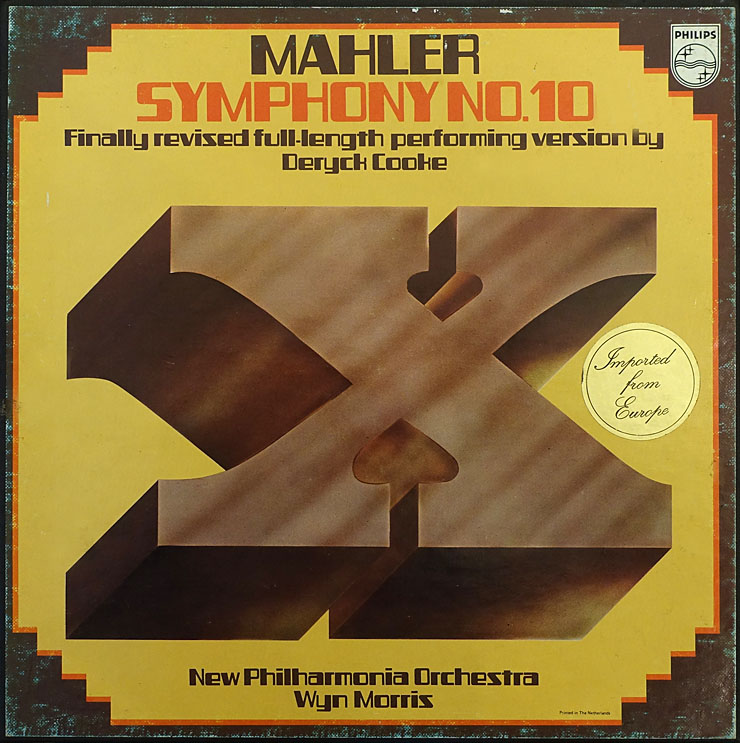Gustav Mahler conducted Beethoven’s Ninth Symphony on ten occasions: in Prague, Hamburg, Vienna, Strassburg and New York. For the last seven of these performances he prepared and used his own score and orchestral parts. I have transcribed and edited these materials...
Leonard Bernstein and Mahler’s Glissandi
Leonard Bernstein’s ability to perform Mahler with all the authentic details was enhanced when he conducted the works with an orchestra that already understood the Mahler style. Such an orchestra is the Concertgebouw of Amsterdam, which retains a tradition that goes back to the composer himself, and which has been nourished by successive music directors.
A good example is given by a very short passage towards the end of the third (slow) movement of the Fourth Symphony. In Bernstein’s later recording, made with the Concertgebouw Orchestra, it is this rather than the preceding loud outburst which emerges as the true climax of the movement. The crucial element is the glissando of the violins. This is notated by means of diagonal lines between the sixth and seventh bars of the music example below.

Concertgebouw Orchestra conducted by Leonard Bernstein
June 1987, Concertgebouw, Amsterdam
The importance of the amount of the glissando, its length and timing, cannot be underestimated: they are crucial for its success. Even though Mahler attempted to notate everything possible in his scores, these features defy musical notation. Indeed, there are no agreed conducting gestures for indicating the exact placement of such a subtle message. If for no other reason (and many have taken exception to the use of a boy soloist in the last movement, which was not envisaged by Mahler) Bernstein’s recording justifies its existence on the basis of this brief moment alone.
The Vienna Philharmonic
The Vienna Philharmonic also retains the Mahler style. Not only did Mahler work with the players every week in the opera house from 1897 to 1907, but his brother-in-law, Arnold Rosé, was the orchestra’s leading concertmaster from that time until 1938. Rosé’s style of playing dominated the sound of the orchestra and lives on still in the string playing. In his later CD of the Fifth Symphony, made in concert, Bernstein took advantage of this tradition, and the whole recording is very successful because of this collaboration.
The following example, from the third movement (Scherzo) of the Fifth Symphony, is less obvious than the earlier one. Mahler instructs the first violins how to finger the transition between two notes, but most orchestras do not take the trouble to follow these instructions. Bars four and five of the music example and recording below show this transition. The horns come to rest on a long note and fade out. Simultaneously, the first violins start the same note inaudibly and fade in. (This is akin to a recording engineer cross-fading between two signals.) Mahler invented this means of subtle transition between timbres, and used it in several of his works: one does not find it in the music of his predecessors or contemporaries.

Vienna Philharmonic Orchestra conducted by Leonard Bernstein
September 1987, Alte Oper, Frankfurt
Let’s take a closer look at Mahler’s instructions. The violins play their first note (a G) on the D-string. There is nothing unusual about this: they would commonly choose to play it on this string, with the third finger, in first position. But to impart a special colour to the new theme, Mahler directs that the note that follows (the same G) be played on the G-string. Futhermore, he specifies that it be played with the fourth finger. This involves the player in changing string and moving the hand along the instrument — from first to fourth position, placing the fourth finger on the D and making a glissando up to the G. Like the previous example, the subtlety and exactness with which this is done are the key to its success.

The above examples are expanded from my essay in the book Perspectives on Gustav Mahler, edited by Jeremy Barham and published by Ashgate Press, 2005.
Rev. 11 Dec 2018





